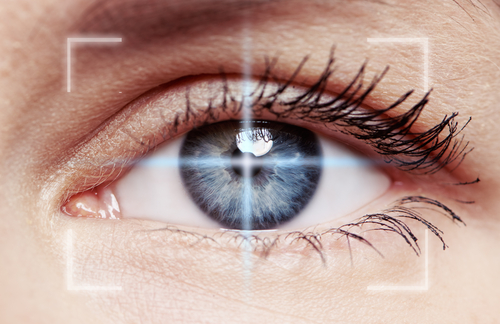Will Angelman Syndrome Affect My Child’s Vision?
Written by |

Angelman syndrome is a complex genetic disorder that, in addition to its frequently reported physical, developmental and nervous system complications, can affect your child’s vision.
How does vision work?
Sight is a complex sense that involves light passing into and through the eyes before being converted into neural signals at the back of the eye. These signals then travel to the brain, where they are interpreted as images.
Light first enters the eye through the clear and curved front portion called the cornea. The cornea bends the light as it passes through, helping other parts of the eye to focus it. The light then passes through the pupil — the hole in the middle of the iris. The pupil can adjust in size to allow more or less light to enter.
The lens focuses the light passing through the pupil. The light then passes through the clear liquid at the center of the eyeball called the vitreous humor, before hitting the back of the eye, a light-sensitive tissue layer called the retina. Part of the retina contains special cells called photoreceptors, which become activated by light. The photoreceptors send signals that travel through the optic nerve to reach the occipital lobe at the back of the brain. The occipital lobe contains the visual cortex, which interprets the nerve signals as images.
Eye problems in Angelman patients
Multiple reports of vision-related problems in Angelman syndrome are known. One study in 34 patients found 97% with blurred vision resulting from myopia (nearsightedness), hyperopia (farsightedness), and/or astigmatism. Twenty-four of these people also had some form of strabismus (crossed eyes), and 18 had ocular hypopigmentation (diminished color of the iris and retina).
Other eye problems reported in Angelman syndrome patients include nystagmus (involuntary eye movements), congestion failure (inflammation), and the lack of an iris (aniridia).
These findings suggest your child is likely to have some form of blurred vision, and possible trouble with controlling their eye movement. Your child may also be unusually sensitive to bright light.
How does Angelman cause vision problems?
Scientists don’t fully understand how Angelman syndrome can cause the various eye problems reported in patients.
The hypopigmentation of the eyes may be related to mutations in two genes located near the UBE3A gene, whose loss of function in the brain is thought to cause Angelman’s symptoms. These two genes are known as the OCA2 gene and the GABRB3 gene.
Research has shown that the OCA2 gene is missing in at least some Angelman patients, resulting in hypopigmentation of the skin, eyes, and hair. The OCA2 gene produces a protein called P protein. The P protein is active in melanocytes — cells that produce the body’s pigmentation, melanin. Melanin is an important molecule in the retina of the eye. It is found in a layer called the retinal pigment epithelium (RPE), which works to protect the eyes’ photoreceptors from excessive light as well as to assist with the general health and function of these cells. Research has shown that albinism of the eyes can lead to photophobia (sensitivity to and avoidance of light), blurry vision, and involuntary eye movement.
Mutations in the GABRB3 gene can also lower melanin. Studies in mice have shown that deleting the GABRB3 gene resulted in the loss of pigmentation of the retina. GABRB3 loss has also been linked with epilepsy and autism. The study found that the loss of GABRB3 caused a lack of expression of the OCA2 gene even though it was fully intact, ultimately leading to a lack of pigmentation. These results suggest that GABRB3 acts on the OCA2 gene, being able to turn its expression on or off. (Gene expression is the process by which information in a gene is converted into a product, like a protein.)
Can these eye problems be treated?
Doctors treat vision problems in Angelman patients in ways similar to treating them in anyone. For nearsightedness, farsightedness, and astigmatism, they can prescribe corrective lenses. The jerky, continuous movements of some children with Angelman syndrome, however, may make wearing glasses difficult.
For strabismus (crossed eyes), your ophthalmologist may recommend glasses or “patching” to correct alignment. Patching involves wearing an eyepatch over the stronger eye for a period of time to bring the brain’s attention to the other eye. If strabismus is severe, your ophthalmologist may suggest surgery to correct the muscles of the eye. Some practices may use botulinum toxin A (Botox) injections rather than eye surgery.
Nystagmus is difficult to treat, but glasses may help to ease these rapid and uncontrolled eye movements. Retinal hypopigmentation and aniridia cannot be treated. However, sunglasses may help your child feel more comfortable around bright lights and sunlight.
Last updated: Nov. 2, 2020
***
Angelman Syndrome News is strictly a news and information website about the disease. It does not provide medical advice, diagnosis, or treatment. This content is not intended to be a substitute for professional medical advice, diagnosis, or treatment. Always seek the advice of your physician or other qualified health provider with any questions you may have regarding a medical condition. Never disregard professional medical advice or delay in seeking it because of something you have read on this website.





